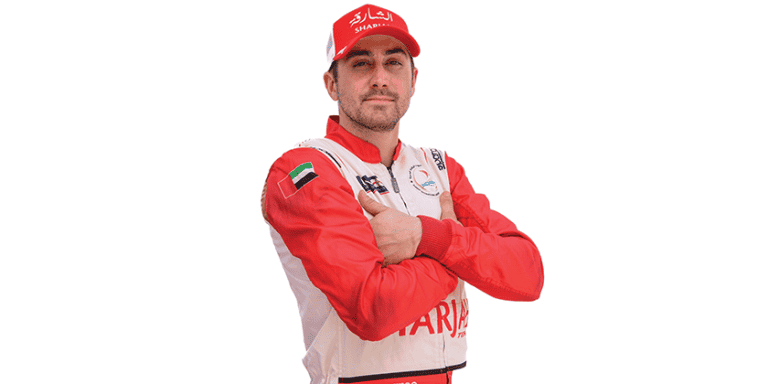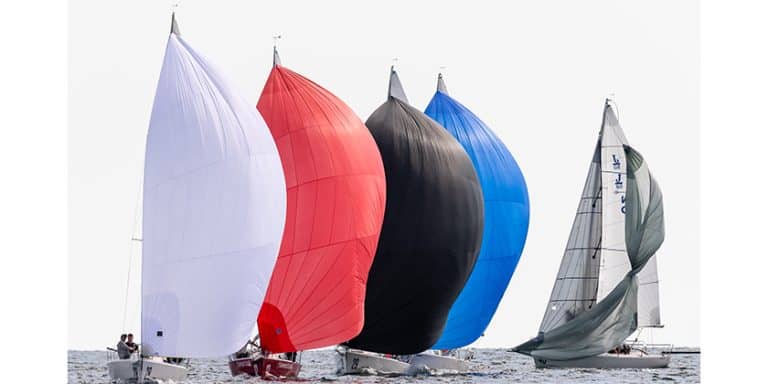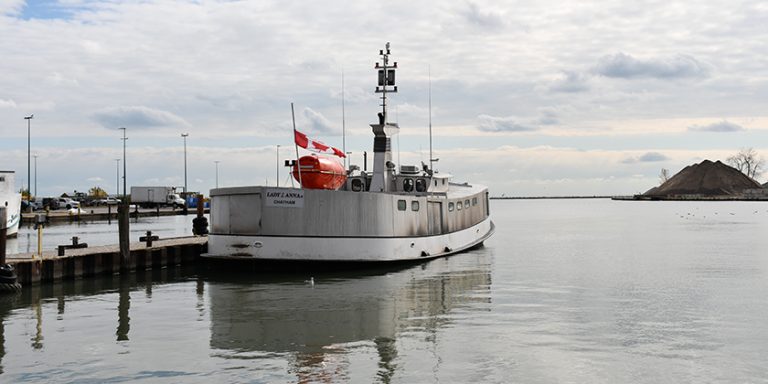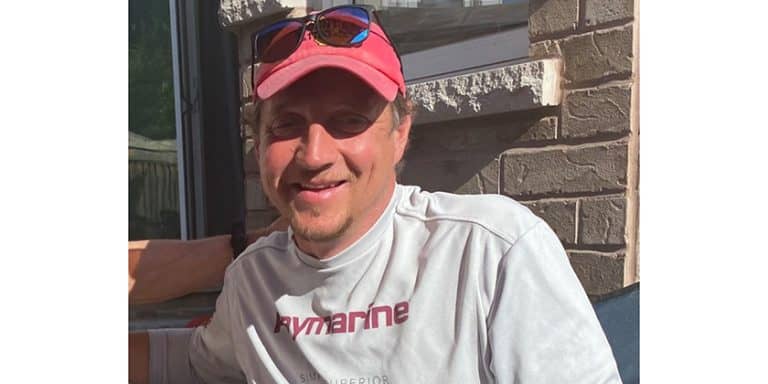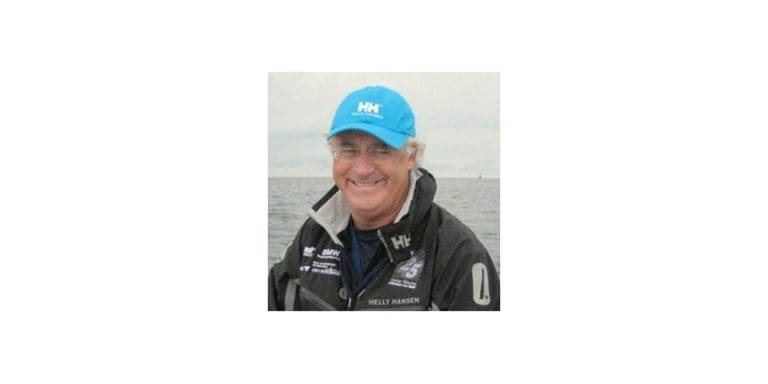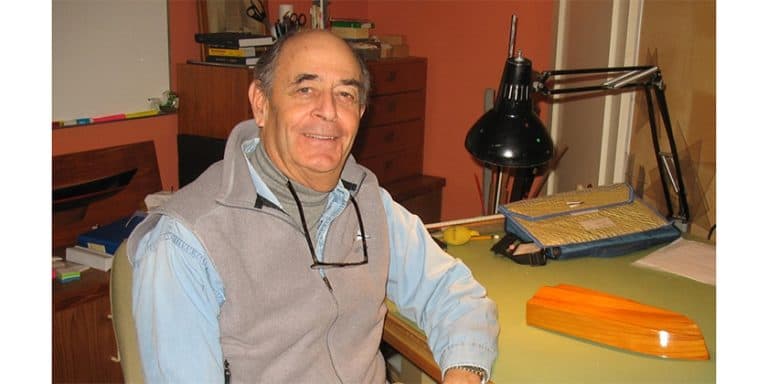Our Four-Legged Crew
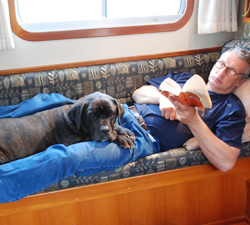
The perfect crew, Kona the Mastiff is always ready for adventure and never fails to entertain.
Watching our boat Sea Foam steam up a channel in the early morning, an observer might notice many things: the red dinghy towing in our wake, the yellow and red kayaks on the pilothouse roof, her salty cabin and graceful lines. But you definitely won’t miss the mastiff riding on the bow.
At 120 pounds, Kona is heavier than our largest storm anchor, roughly the same size as our engine and by far the best conversation piece in our 40-foot home. Again and again, we are asked the inevitable question, “Why not get a smaller dog?”
The answers are simple. We never worry about Kona getting carried off by an Eagle in its talons. Nor do we fret about anything being carried off Sea Foam while Kona is aboard. She may be large but she requires the same care as a toy breed.
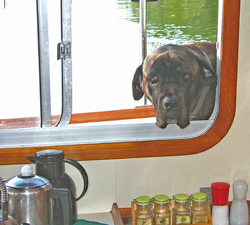 Kona came to boating when she was two years old, and she has adapted wonderfully to the liveaboard life. She is great company when you want to check a crab trap, hang a fishing line out or just putt around the anchorage at sunset. She keeps us safe, exercised and entertained by her wonderful personality. Who could ask for a better boating companion?
Kona came to boating when she was two years old, and she has adapted wonderfully to the liveaboard life. She is great company when you want to check a crab trap, hang a fishing line out or just putt around the anchorage at sunset. She keeps us safe, exercised and entertained by her wonderful personality. Who could ask for a better boating companion?
Kona loves our bright red tender, which we call Catch-Up. She knows it is her ticket to exploration and high adventure. She stations herself in the bow with her two front feet on the anchor locker. When the boat is moving fast, her ears flap and she looks like the Flying Nun. From this vantage point she keeps a sharp lookout for deadheads, dolphins, seals and whales.
And she finds them. We were once laying a prawn trap from our tender in Booker Lagoon on Broughton Island. This lagoon is famous for the resident dolphins that frequently “buzz” entering boats and frolic in their wakes. One of them chose our tender for its fun – but Kona thought we were under attack from sea monsters below.
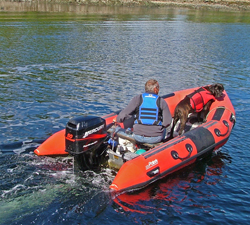 As the dolphin playfully swam under and around our tender, Kona growled and stamped on the bottom of the boat with her front legs, much the same way a polar bear will rear up and crash down with its weight to break through ice. She became increasingly distressed by this dolphin “assault” and we had to return her to the mother ship before continuing our prawning mission.
As the dolphin playfully swam under and around our tender, Kona growled and stamped on the bottom of the boat with her front legs, much the same way a polar bear will rear up and crash down with its weight to break through ice. She became increasingly distressed by this dolphin “assault” and we had to return her to the mother ship before continuing our prawning mission.
Another time, while exploring from our tender in Smith Inlet, just north of Cape Caution, we were treated to the familiar sound of a whale blowing. Much to our delight, two humpbacks were feeding along the shoreline. Kona saw them surface and began to bark. They disappeared under the water for a few minutes and then surfaced again, this time closer to our tender. Kona was now on high alert, barking each time they came up. One of the whales must have become curious about the commotion and did a “spy hop,” coming close to the boat and out of the water just enough to look around. Kona did some quick calculations…and took a step back from the bow.
We have found Kona to be a great alarm system on the water and on land. As we trekked through the forest to explore a nearby lake, she stopped suddenly. Every hair on her back, from her stubby tail to her two velvet ears, stood straight up. She began a low growl and could not be convinced to go forward. “The nose knows,” I thought. After waiting about five minutes, making a lot of noise and throwing sticks and rocks into the brush, I felt comfortable to move forward again. Kona agreed and we proceeded to the lake without incident. I had never seen her behave like that before, nor have I since.
Another afternoon, while surveying the shoreline from the bow of the boat, Kona started barking and growling and the hair again stood up on her back. This time, the danger was a small flock of angora goats on Prevost Island, standing on their back legs eating the leaves off the trees. Kona thereafter kept a sharp lookout for goat, sheep or marmot attacks from the shore near our anchorage.
After five years of cruising with Kona, we have grown very used to having her around. We hate to leave her when we go kayaking or diving. She has perfected the “hang dog” look when we pull away from the boat. And she sleeps on our bed while we are gone, a revenge tactic that would go unnoticed if not for the rumpled sheets.
Because of Kona we have enjoyed some of the most beautiful beaches and hiking on this planet. Walking those beaches and trails early in the morning and late in the evening has given us some of our best cruising memories. Some people have asked us if we will choose a smaller dog next time, a breed that doesn’t take up the same amount of space as two adults standing on our boat.
The answer is a resounding no.
By Carol-Ann Giroday
Carol-Ann Giroday and Rick LeBlanc live aboard their 40’ TransPac Eagle pilothouse MV Sea Foam. They boat year-round throughout the Pacific Northwest and summer along the Inside Passage.
PHOTO CAPTIONS
Photos Credit: Rick LeBlanc
1. Salon Sleep – Nap time!
2. Galley Helper – What’s for lunch?
3. Catch-Up – Kona keeps a lookout from her perch in the bow of Sea Foam’s tender.

